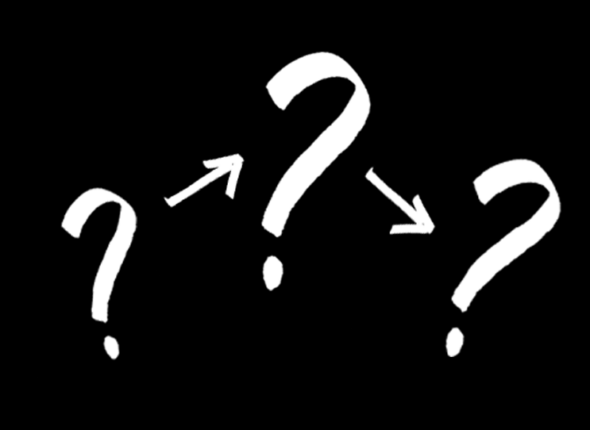-
-
-
-
-
The 5W+H method is a tool in design thinking that helps understand problems and seek possible solutions. It uses six questions - Who, What, Where, When, Why, and How. This method allows for a systematic and logical approach to the complexity of a problem and gaining an overview of possible solutions. It is useful in various stages of the design process and can be applied in areas such as management, project management, and marketing.
Questions
Who? This question aims to determine who is involved in the problem or who is affected by the situation.
- Who are the key stakeholders?
- Who is responsible for the project?
- Who will be impacted by the problem?
- Who has knowledge or expertise in this area?
- Who needs to be involved in the decision-making process?
What? This question focuses on the problem itself or the goal of the solution:
- What problem are we facing?
- What are the goals of the project?
- What are the key features of the product?
- What are the main points that need to be addressed?
- What is the desired outcome?
Where? This question pertains to the location or environment where the problem occurs or where the solution is to be implemented:
- Where did the problem occur?
- Where will the project be implemented?
- Where are the key resources located?
- Where is the main audience located?
- Where can we obtain more information about the problem?
When? This question determines when the problem arose or when the solution is to be implemented:
- When did this problem arise?
- When is the project deadline?
- When will the product be launched?
- When can we schedule a meeting to discuss the problem?
- When will the problem have the most significant impact?
Why? This question aims to understand the causes and reasons why the problem occurs:
- Why does the problem occur?
- Why do we need to complete this project?
- Why is this product essential for our company?
- Why are we facing these challenges?
- Why is it necessary to address this problem immediately?
How? This question focuses on ways to solve the problem and encourages the generation of various options and approaches:
- How did the problem arise?
- How can we achieve the project goals?
- How will we market this product?
- How can we effectively solve this problem?
- How will our actions affect other participants in the situation?
Implementation Steps of the Method
- Define the goal. The first step in implementation is to clearly define the topic or problem you want to analyse or solve using this method.
- Create a template. At this stage, you need to create a template, table, or even a mind map where questions and answers will be recorded.
- Formulate the 5W+H questions. Gradually ask the questions Who, What, Where, When, Why, and How, and seek answers to gain a complete picture of the problem.
- Identify key answers. From the generated answers, highlight those that are key and important for further work with the team.
Tips
- If any of the W+H questions do not fit the context of the task, we can skip them and move on to the next one.
- It is advisable to write a minimum of 2 and a maximum of 5 words on a Post-it note. It is also recommended that each team spend 5 minutes working on each column of questions.
- The schema can be created in PowerPoint or in Jamboard (part of the Google Workspace suite). Alternatively, the 5W+H schema or grid can be drawn on paper.
Possible uses
- Defining the target audience for a new product
- Writing an article (journalism), press release
- Understanding problematic situations and identifying causes
- Preparing interviews
You can download template here: 5 WH QUESTIONS
The 5W+H method is a tool in design thinking that helps understand problems and seek possible solutions. It uses six questions - Who, What, Where, When, Why, and How. This method allows for a systematic and logical approach to the complexity of a problem and gaining an overview of possible solutions. It is useful in various stages of the design process and can be applied in areas such as management, project management, and marketing.
Questions
Who? This question aims to determine who is involved in the problem or who is affected by the situation.
- Who are the key stakeholders?
- Who is responsible for the project?
- Who will be impacted by the problem?
- Who has knowledge or expertise in this area?
- Who needs to be involved in the decision-making process?
What? This question focuses on the problem itself or the goal of the solution:
- What problem are we facing?
- What are the goals of the project?
- What are the key features of the product?
- What are the main points that need to be addressed?
- What is the desired outcome?
Where? This question pertains to the location or environment where the problem occurs or where the solution is to be implemented:
- Where did the problem occur?
- Where will the project be implemented?
- Where are the key resources located?
- Where is the main audience located?
- Where can we obtain more information about the problem?
When? This question determines when the problem arose or when the solution is to be implemented:
- When did this problem arise?
- When is the project deadline?
- When will the product be launched?
- When can we schedule a meeting to discuss the problem?
- When will the problem have the most significant impact?
Why? This question aims to understand the causes and reasons why the problem occurs:
- Why does the problem occur?
- Why do we need to complete this project?
- Why is this product essential for our company?
- Why are we facing these challenges?
- Why is it necessary to address this problem immediately?
How? This question focuses on ways to solve the problem and encourages the generation of various options and approaches:
- How did the problem arise?
- How can we achieve the project goals?
- How will we market this product?
- How can we effectively solve this problem?
- How will our actions affect other participants in the situation?
Implementation Steps of the Method
- Define the goal. The first step in implementation is to clearly define the topic or problem you want to analyse or solve using this method.
- Create a template. At this stage, you need to create a template, table, or even a mind map where questions and answers will be recorded.
- Formulate the 5W+H questions. Gradually ask the questions Who, What, Where, When, Why, and How, and seek answers to gain a complete picture of the problem.
- Identify key answers. From the generated answers, highlight those that are key and important for further work with the team.
Tips
- If any of the W+H questions do not fit the context of the task, we can skip them and move on to the next one.
- It is advisable to write a minimum of 2 and a maximum of 5 words on a Post-it note. It is also recommended that each team spend 5 minutes working on each column of questions.
- The schema can be created in PowerPoint or in Jamboard (part of the Google Workspace suite). Alternatively, the 5W+H schema or grid can be drawn on paper.
Possible uses
- Defining the target audience for a new product
- Writing an article (journalism), press release
- Understanding problematic situations and identifying causes
- Preparing interviews
You can download template here: 5 WH QUESTIONS








